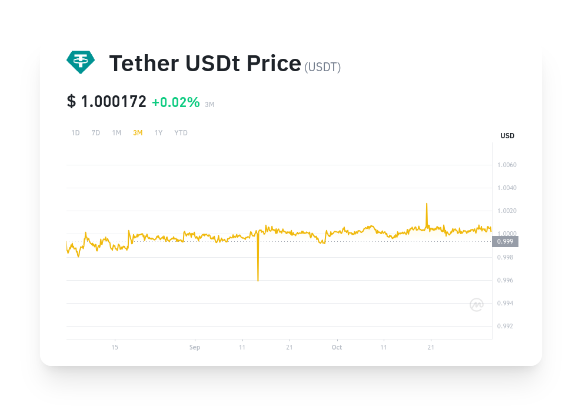What are stablecoins

Stablecoins are a type of cryptocurrency designed to minimize price volatility. While traditional cryptocurrencies like Bitcoin and Ethereum experience wild price swings, stablecoins aim to maintain a consistent value over time.
Stablecoins play a critical role in the cryptocurrency ecosystem. They provide stability in a volatile market, enabling businesses and individuals to transact using crypto without worrying about price fluctuations.
Understanding Stablecoins
Definition of Stablecoins
Stablecoins are digital tokens designed to maintain a stable value against a specific asset or a pool of assets. They are often pegged to traditional fiat currencies like the US Dollar, Euro, or Gold.
Types of Stablecoins
There are three main types of stablecoins: fiat-collateralized, crypto-collateralized, and non-collateralized. Each type has its own mechanism to maintain price stability.
Fiat-Collateralized Stablecoins
These are stablecoins that are directly backed by fiat currencies like the US Dollar or Euro. For every stablecoin issued, there is a corresponding unit of real-world currency stored in a bank or other regulated financial institution. This physical backing provides a 1:1 value ratio, maintaining the stablecoin’s price stability.
 USDT price history
USDT price history
Crypto-Collateralized Stablecoins
Unlike fiat-collateralized stablecoins, these are backed by other cryptocurrencies. Due to the volatile nature of cryptocurrencies, these stablecoins are typically over-collateralized, meaning that the total value of the cryptocurrency collateral is higher than the value of the stablecoins issued, providing a buffer against market fluctuations.
Non-Collateralized Stablecoins
These stablecoins are not backed by any collateral, whether it’s fiat or crypto. Instead, they use algorithms and smart contracts to automatically adjust the supply of the stablecoin in response to changes in demand, aiming to keep the stablecoin’s price close to a specific target value.
How Stablecoins Work
Stablecoins maintain their value by holding reserves of a stable asset, using smart contracts to maintain price stability, or through an algorithmic supply mechanism.
The History of Stablecoins
Stablecoins were introduced to tackle the problem of high volatility in the crypto market. The first stablecoin, Tether (USDT), was launched in 2014. Since the launch of Tether, the stablecoin market has seen significant growth and evolution, with many new stablecoins being introduced, each with unique features and mechanisms.
 USDT (Tether) logo
USDT (Tether) logo
The Benefits of Stablecoins
- Stablecoins offer a safe haven during market volatility. Traders can convert their volatile cryptocurrencies into stablecoins to avoid market downturns.
- Stablecoins provide a stable medium of exchange, making them ideal for transactions, payments, and remittances.
- Stablecoins can play a crucial role in financial inclusion, providing access to digital currencies to the unbanked and underbanked populations.
Risks and Challenges of Stablecoins
- Stablecoins face regulatory scrutiny worldwide, as they could potentially disrupt the traditional financial system. Managing collateral reserves for fiat-collateralized stablecoins can be complex and challenging.
- There’s always a possibility that a stablecoin could fail to maintain its peg, leading to a sharp drop in value. This could have wider implications for the cryptocurrency market as a whole.
The Future of Stablecoins
Beyond just providing stability in the crypto market, stablecoins could be used for a wide range of purposes, including remittances, payments, smart contracts, and more.
Stablecoins could have a significant impact on global finance by enabling faster and cheaper cross-border transactions, improving access to financial services, and potentially reshaping the global monetary system.
There’s a lot of potential for stablecoins in the future, particularly as blockchain technology continues to evolve and mature. However, the path forward will depend on a range of factors, including regulatory developments, technological advancements, and market dynamics.

Conlusion
In conclusion, stablecoins play a critical role in the cryptocurrency market by providing stability in a volatile environment. However, they also come with their own set of challenges and risks.
Despite the challenges, the potential benefits of stablecoins are significant, and they could play a key role in the future of finance. As the technology continues to evolve, it will be interesting to see how the role of stablecoins develops in the coming years.